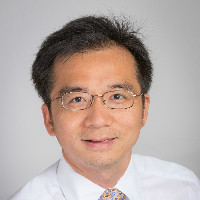By Bryant Haskins, NCBiotech Writer | July 3, 2018
Sound waves may become the next effective tool to help doctors diagnose cancer and develop more personalized diagnostics and treatments.
A new study conducted by researchers from Duke University, MIT and Singapore’s Nanyang Technological University shows that sound waves are capable of rapidly and efficiently separating circulating tumor cells (CTCs) from blood. CTCs are small pieces of tumor that break away and flow through the bloodstream. They contain a wealth of information including tumor type, physical characteristics and genetic mutations.
So the ability to quickly harvest and grow these cells from blood samples would enable doctors to collect “liquid biopsies” that could diagnose patients and suggest more individualized treatment options. Sound waves might even eventually supplant biopsies, which are painful, invasive and often not administered until late in the cancer’s development.

Tony Huang
“With our circulating tumor cell separation technology, we could potentially help find out, in a non-invasive manner, whether the patient has cancer, where the cancer is located, what stage it’s in, and what drugs would work best,” said Tony Jun Huang, William Bevan professor of mechanical engineering and materials science at Duke. “All from a small sample of blood drawn from the patient.”
One of the big challenges is that CTCs are rare—typically only a few for every billion blood cells—and difficult to catch. While technologies already exist to separate tumor cells from normal blood cells, they tend to damage or kill the cells in the process. And they aren’t efficient, only work on specific types of cancer, or are too slow to be used in many situations.
The sound wave method is fast and effective enough for clinical use, processing a 7.5 mL (1 ½ teaspoon) vial of blood in less than an hour with 86 percent efficiency. But its biggest asset is that “it’s very gentle on the circulating tumor cells,” said Andrew Armstrong, associate professor of medicine, surgery, and pharmacology and cancer biology at the Duke University School of Medicine. “The cancer cells remain viable…and can be characterized, cultured or profiled, which allows us to do genotyping or phenotyping to better understand how to kill them.”
He said the idea is to develop more personalized treatments for patients based on their cancer biology. Researchers hope the platform will lay the groundwork for a new test using an inexpensive, disposable chip.
Huang continues to work on improving the technology to increase both its speed and efficiency, while Armstrong determines its potential for clinical use in a number of culturing and profiling projects. They also plan to deploy the platform in a variety of research projects, such as examining how CTCs survive in the bloodstream and spread through the body.
The results of the sound wave study (Circulating Tumor Cell Phenotyping via High-Throughput Acoustic Separation) appear in the July 3 issue of the journal Small. The National Institutes of Health and the National Science Foundation supported the research.
The scientists have produced this accompanying YouTube video of the cell-sorting technology at work.
This is another example of the transformative precision health sector that contributes to North Carolina’s global life science leadership. Significantly, Duke is a partner in the North Carolina Biotechnology Center-led NC Precision Health Collaborative.

